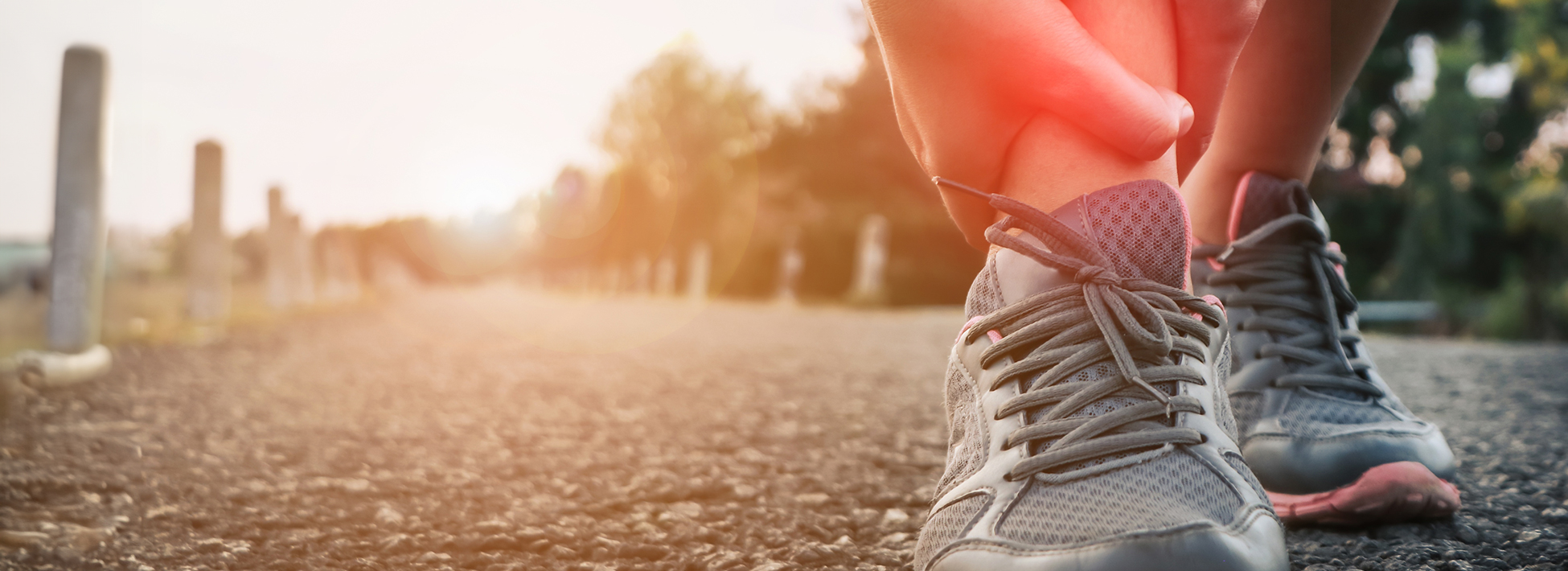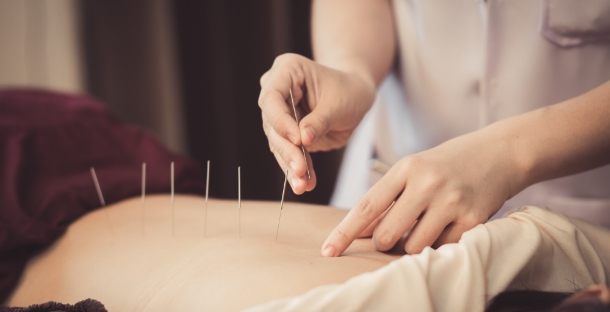
General & Sports Injuries
Sports injuries is a broad term for the kinds of injuries that commonly result from physical activities, although they’re not exclusive to sports. Both professional athletes and those just trying to keep in shape are likely to suffer a sports injury. Also, those who work physically demanding jobs are prone to many types of sports injuries, like strains, sprains, or dislocations. These kinds of injuries can be painful and reduce mobility. If left untreated, recovery can take a long time, meaning you may not be able to resume your regular daily activities for months at a time.
How can acupuncture help?
Acupuncture is a holistic treatment that restores and supports your body’s natural healing processes by improving the flow of Qi along meridians or pathways in your body. Injuries disrupt the natural flow of energy in your body, causing inflammation, pain, and stagnation. Since most injuries that result from physical exertion come with inflammation and chronic or acute pain, acupuncture is well suited to both offer relief and shorten recovery time.
Acupuncture is a non-invasive treatment that is effective at managing pain and reducing inflammation, which makes it a good alternative to prescription medication. As the treatment also relaxes strained muscles and improves flexibility, acupuncture can even help reduce the likelihood of future injury.
Common sports injuries
There are a number of injuries that tend to occur among those who play sports, work out often, or who have physically demanding jobs. Many of these injuries result from repetitive motions, over exertion, or simply not warming up enough before you start exercising. Most people will experience some kind of sports injury in their lifetime. Below, you’ll find some of the most common injuries that are treated with acupuncture.
Tennis elbow
Tennis elbow, or lateral epicondylitis, is the painful inflammation or micro-tearing of the tendons that join the forearm muscles to the outside elbow. This results from overuse, typically by repetitive motions of the arm and wrist. Tennis elbow isn’t exclusive to racket sports, it’s also been known to occur from activities like plumbing or painting.
Golfer’s elbow/pitcher’s elbow
Golfers elbow, or medial epicondylitis, is the inflammation or injury of the tendons that bend the wrist toward the palm. This occurs when excessive force is used to bend the wrist toward the palm, like when swinging a golf club or baseball bat. Unlike tennis elbow, which effects the outside of the elbow, pain from golfer’s elbow is experienced on the inside of the joint. Other names for this condition are baseball elbow, suitcase elbow, or forehand tennis elbow.
Frozen shoulder
Frozen shoulder, or adhesive capsulitis, is a condition where the connective tissue surrounding your shoulder joint becomes stiff and tight. The initial stages of frozen shoulder ae quite painful as adhesions develop, and results in a reduction of mobility in the joint. The exact cause of this condition is not fully understood, but factors like diabetes, cardiac conditions, or immobilizing the shoulder after injury or surgery may contribute to frozen shoulder occurring.
Achilles tendonitis
Achilles tendonitis occurs when the tendon that connects the calf muscles at the back of the lower leg to your heel bone (the Achilles tendon) becomes swollen and painful near the bottom of your foot. This most commonly occurs in runners who suddenly increase the intensity or duration of their runs, or in middle aged people who play sports semi-regularly.
Planter fasciitis
Plantar fasciitis is a painful degenerative condition that affects the thin ligament that lies directly beneath the skin on the bottom of your foot (the plantar fascia). This tendon supports the muscles and arch of your foot, and when it is overstretched or put under too much pressure, it can become painful and inflamed.
Runner’s knee
Runner’s knee, or patellofemoral pain syndrome (PFPS), describes pain in the front of the knee and around the patella, and often results in stiffness that makes it difficult to climb stairs, kneel, or perform other daily activities. Common causes are overuse during physical activities, a misalignment of joints in the leg, or from muscle weakness.
Carpal tunnel syndrome (CTS)
Carpal tunnel syndrome (CTS) is caused when the median nerve, which runs from the forearm into the palm of the hand, becomes pressed or squeezed at the wrist. Common symptoms are tingling or numbness in your hands or fingers, and weakness in your hand that may cause you to drop things often. The condition usually results from a combination of factors, such as fracturing or dislocating your wrist, inflammatory conditions like rheumatoid arthritis, or working with tools that cause vibrations or repetitive motions.
Osteoporosis
Osteoporosis is a condition that causes weak, porous bones. It occurs when the body reabsorbs more bone tissue than it produces to replace it, which lowers bone density. As a result, people with osteoporosis will be more likely to break a bone when they fall or engage in physical activity. This condition can affect anyone, but it is more common in women who are post-menopausal.
Shin splints
Shin splints, or medial tibial stress syndrome, occur when there is inflammation of the muscles, tendons, and bone tissue around the tibia. They’re most frequently brought on when you change the frequency or intensity of your workouts. Symptoms include pain, tenderness, or soreness along the inner side of the tibia and mild swelling of the lower leg.
Trochanteric bursitis
Also known as hip bursitis, trochanteric bursitis is the painful inflammation of the bursa in your hip. Bursae are small fluid-filled sacs that cushion and protect the soft tissue around your joints. The most common form of hip pain results from bursitis. Runners, cyclists, soccer players, and football players are likely to experience trochanteric bursitis, but it can also result from an injury or after hip surgery.
Whatever your health goals are, acupuncture can help you manage your symptoms and restore balance in your body, and your life. You’ll receive treatments that are tailored to your unique needs. Learn what to expect if it’s your first appointment.
Note: For an official diagnosis of any of the above conditions, you should speak with your healthcare provider.
